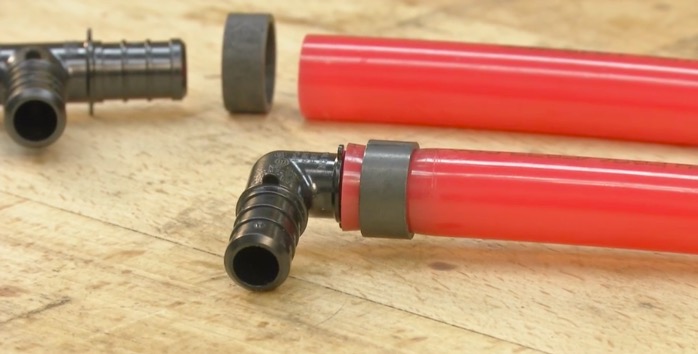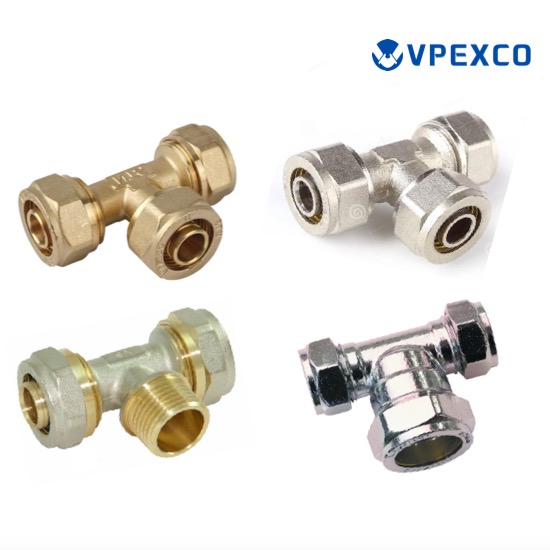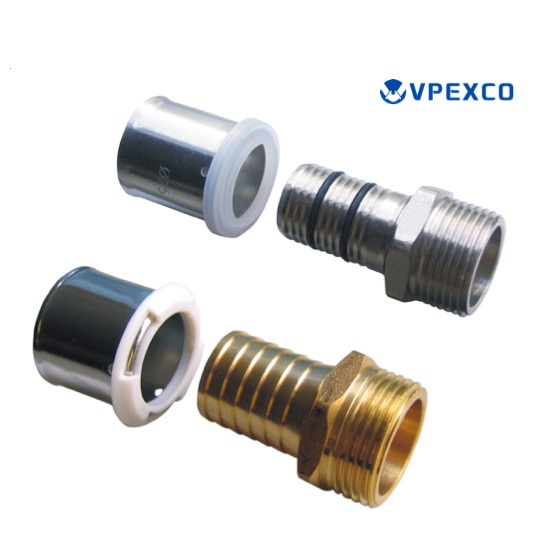Table of Contents
ToggleHow many types of brass fittings for pex pipe connection?
Pex Fittings | Standard | Brass Material | Connection Tools | Pipe Size | Main Country |
|
Push Fit /Push in/ Shark bit Fittings | F2854 | C46500 | No tools required | 1/2" to 2" | US, Canada |
|
Push Fit /Push in/ Shark bit Fittings | ISO 15875 | DZR CW602N | No tools required | 16x2.0, 20x2.0, 25x2.5, 32x3.0 | Australia, England, etc |
|
Compression Fittings | ISO 15875 | CW617N, HPB58-3A | Wrench | 16x2.0, 20x2.0, 25x2.5, 32x3.0 | Europe, Africa, Mid East, etc |
|
Expansion Fittings | F1960 | C46500, CW617N | Expander Tool + PEX A Sleeves | PEX A 1/2" to 2" | US, Russia, Spain, etc |
|
Crimp Fittings | F1807 | C46500 or C37000 | Crimp (Crimp Tool + Crimp Rings) | 1/2" to 2" | US, Canada, Mexico |
|
Clamp Fittings | F1807 | C46500 or C37000 | Clamp (Cinch Tool + Cinch Clamps) | 1/2" to 2" | US, Canada, Mexico |
|
Press Fittings | ISO 15875 | DZR CW602N, CW617N, HPB58-3A | Press (Press Tool + Steel Sleeves) | 16x2.0, 20x2.0, 25x2.5, 32x3.0 | US, Australia, and countries in Europe, Africa, Mid East |
|
Sliding Fittings (Barbi style) | ISO 15875 | CW617N, HPB58-3A | Sliding Press Tool + Brass Ring | 16x1.8, 20x1.9,25x2.3, 32x2.9 | Spain,Portugal, France, Italy, Brazil, Argentian, etc |
|
Sliding Fittings (Rehau style) | ISO 15875 | CW617N, HPB58-3A | Sliding Press Tool + Brass Ring | 16x2.2, 20x2.8,25x3.5, 32x4.4 | Russia, Ukraine, Germany, Australia, etc |
|
How many types of plastic fittings for pex pipe connection?
There’re 4 main types for pex plastic fittings:

plastic pex crimp fittings
1. Plastic Crimp Fittings
These use crimp rings or bands that are tightened around the PEX pipe and fitting with a crimping tool to create a secure connection. Crimp fittings work with PEX-B and PEX-C tubing.
2. Plastic Expansion Fittings (PEX-A only)

pex pipe expansion fittings in plastic
Also called cold expansion fittings, these use an expansion tool to expand the end of the PEX-A pipe, which is then pushed over a barbed fitting piece. When the pipe contracts, it grips the fitting tightly.
3. Plastic Push-Fit Fittings

pex plastic push fittings
These allow the PEX pipe to be simply pushed into the fitting, which has a teethed ring that grips the pipe when inserted. Push-fit fittings work with PEX-A, PEX-B and PEX-C.
4. Plastic Press Fittings

pex press fittings compression fittings
Similar to push-fit, these use a compression ring that is tightened around the pipe to grip it against the fitting body. Usable with all PEX types.
Brass PEX Fittings vs Plastic Pex Fittings
Here is a table comparing brass vs plastic PEX fittings:
Attribute | Brass PEX Fittings | Plastic PEX Fittings |
Material | Solid brass | Polymers like PPSU, polysulfone, reinforced polyethylene |
Durability | Higher durability, longer-lasting | Lower durability compared to brass |
Temperature/Pressure Ratings | Can withstand higher temperatures and pressures | Lower temperature and pressure ratings |
Typical Applications | Plumbing and hydronic heating applications | Mainly used for plumbing applications |
Connection Method | Used with crimp rings | Used with crimp rings, clamps or expansion fittings |
Cost | More expensive | More affordable than brass |
Reliability | Provide a sturdy, reliable connection | Some may be prone to cracking or degradation over time |
Service Life | Longer service life | Shorter service life compared to brass |
Brass PEX Fittings:
*Made of solid brass material, more durable and longer-lasting than plastic
*Can withstand higher temperatures and pressures
*More expensive than plastic fittings
*Used with crimp rings to secure the PEX pipe connection
*Suitable for both plumbing and hydronic heating applications
*Provide a sturdy, reliable connection
Plastic PEX Fittings:
*Made from polymers like PPSU, polysulfone or reinforced polyethylene
*More affordable than brass fittings
*Have lower temperature and pressure ratings compared to brass
*Used with crimp rings, clamps or expansion fittings to join PEX pipes
*Mainly used for plumbing applications, not as common in hydronic heating
*Some plastic fittings may be prone to cracking or degradation over time.
In summary, the key advantages of brass PEX fittings are higher durability, ability to handle higher temperatures/pressures, suitability for both plumbing and heating applications, and longer service life. However, they come at a higher upfront cost compared to plastic PEX fittings, which are more economical but may have limitations in terms of durability and maximum temperature/pressure ratings.
Why brass pex fittings is better than plastic pex fittings?
Choosing between brass and plastic PEX fittings is often a matter of specific application, budget, and personal preference. However, there are several reasons why one might opt for brass fittings over plastic ones:
Durability & Strength
Brass PEX fittings are typically stronger and more durable than their plastic counterparts. They can withstand higher temperatures and pressures, which makes them suitable for heavy-duty commercial applications.
Compatibility
Brass fittings are versatile and compatible with various types of pipes, including copper and iron. This can render installation and repairs more straightforward in a mixed-material system.
Resilience
Despite being subject to potential corrosion, high-quality brass fittings generally demonstrate long-standing performance. They usually don't warp, crack or degrade over the years.
Structural Integrity
Brass fittings are notorious for maintaining their shape and structure, even under stress. They provide a secure and tight connection, minimizing the risk of leaks.
The choice depends on factors like the application, local codes, desired service life, and weighing the upfront cost against long-term reliability and performance requirements. But in general, brass PEX fittings are considered the more robust and longer-lasting option. For more information or inquiry or the brass pex fittings, welcome to contact us.


















